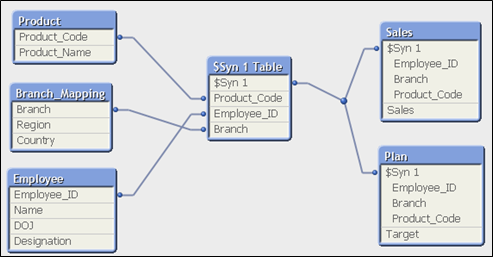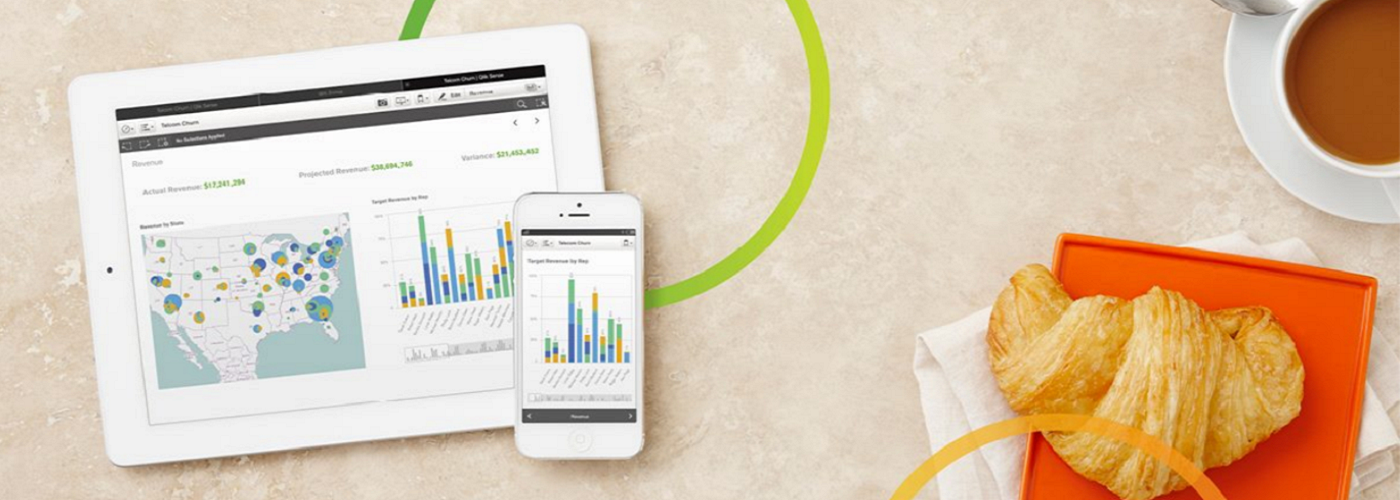If you want Qlik Sense objects in your reports, you must connect your Qlik NPrinting installation to one or more Qlik Sense apps. In this post, we show you how to do just that.
Requirements:
- Qlik Sense 2.3 or later
- Qlik NPrinting 17.2.1 or later
It’s also important to note that the Qlik NPrinting Engine service account must be a Windows domain user. This user must also be given RootAdmin authorization in the Qlik Sense QMC. Without this you will not be able to connect successfully.
Unsupported Qlik Sense Objects
We do not recommend creating connections to Qlik Sense apps that use:
- Always one selected value for fields
- Calculated dimensions
- Drill-down dimensions
- Alternate states
Qlik NPrinting cannot modify or remove these options. As a result, Qlik NPrinting may not have access to the entire data set of the Qlik Sense app.
If you want to use a Qlik Sense app with these unsupported features, you must do the following:
- Create a copy of the Qlik Sense app.
- Remove all unsupported features.
- Use the copied Qlik Sense app for reporting purposes.
Connecting to Qlik Sense Apps
Time needed: 1 hour
Here, we explain how to connect your Qlik NPrinting to Qlik Sense Apps.
- On the main menu, click the Apps drop-down, and clickApps.
To begin, you must create an NPrinting app. An NPrinting app contains report templates, filters, and connections to Qlik Sense apps.
- Click the “Create App” button.
Enter a name for the app. In this example, we are going to call it ‘Overdue Receivables’. Ensure the Enabled check box is selected. - Next, click “Create”.
You’ve just created your app. Next, you must add connections to signify a source connection from Qlik NPrinting to Qlik Sense apps. You can add new connections, or modify existing connections for each NPrinting app. There is no limit to the number of connections you can add to an app. - On the main menu, click the Apps drop-down, and click “Connections.”
- Click the “Create Connection” button.
In the Name box, enter a name for the connection. Next, from the App drop-down list, select the app you’ve just created. After that, select Qlik Sense as the source. - Enter the Proxy Address and the Sense App ID.
Proxy address – the full computer name of the Qlik Sense server.
The proxy address must be prefixed with HTTP or HTTPS if it is enabled on the Qlik Sense proxy. HTTPS is the default. You can find this in the Qlik Sense hub, in your browser’s address bar, on your app’s overview page. The format is: https://sense_proxy_computer_name.domain_name.
Your proxy address may have a prefix at the end. In this case, the format is: https://sense_proxy_computer_name.domain_name/prefix.
Sense app ID – The app ID is located at the end of the address name. - Enter the Identity.
First, insert the Windows domain name and the username of the Qlik Sense user who has access to the app. The format is <Windows domain name>\<user name>. This user must be a Windows domain user. Without this requirement you will not be able to connect successfully.
If you want to apply the theme colors from the Qlik Sense app to reports created with this connection, then click the Apply Sense app theme check box.
If you make any changes to the Qlik Sense app theme, you will need to manually reload the connection to apply the updated theme.
Additionally, if you want to apply section access for the selected Identity, click the Apply user section access for reports check box. - Select “Run Verification” to verify the connection is valid.
If the connection is valid, you will see a ‘Verification successful’ message.
Qlik has a helpful troubleshooting guide for connection errors if you are not getting the ‘Verification successful’ message. - Once your connection settings have been verified, select “Create.”
This will automatically take you back to the Connections menu. Qlik NPrinting is now connected to a Qlik Sense app.
To take this one step further, you now can prepare a report using Qlik Sense data from the Qlik Sense app we just connected to. - On the main menu, click “Reports.”
- Select “Create Report.”
- Enter a title in the Title field.
Next, from the Type drop-down list, select your desired report type. After that, from the App drop-down list, select the app that was created earlier. Lastly, from the Template options, click Empty file. And ensure the Enabled check box is selected. Then, click Create.
- To begin creating/editing reports, click the Edit template button under the report.
The Qlik NPrinting Designer opens. Since we are creating an Excel report, we will see the standard Excel interface. Most Excel formatting features can be applied to your report using this interface.
We’re going to make a very simple report. - In cell A1, type in a title. For example, ‘Overdue Receivables’. Next, in cell A2, type in a subtitle. For example, ‘VP Ranking’.
You can use Excel formatting options to change font, size, color, etc. Add images. On the left pane, right-click Images, and select Add objects.
A new window will open. Here you will see a listing of all objects in the Qlik Sense app. - We are going to select “VP Ranking – NPrinting” and click “OK.”
- Click on the object labeled ‘YhHrhma – VP Ranking – NPrinting’ under Images and drag it to cell B4.
Because these are images, trying to format the using Excel formatting will have no effect.
- On the Qlik NPrinting template editor menu, click the File tab. Click Save.
- Click Save And Close.
The report template is now saved and ready to be distributed.
Conclusion
Now you know how to connect Qlik NPrinting to Qlik Sense Apps! Keep in mind that this post does not cover everything you can do in Qlik NPrinting Designer.
Once you have created your report, you can create a task to publish the report. Learn how to do this in our post on publishing and distributing Qlik NPrinting reports to the Qlik Sense Hub.
Learn more about Qlik Sense:




















